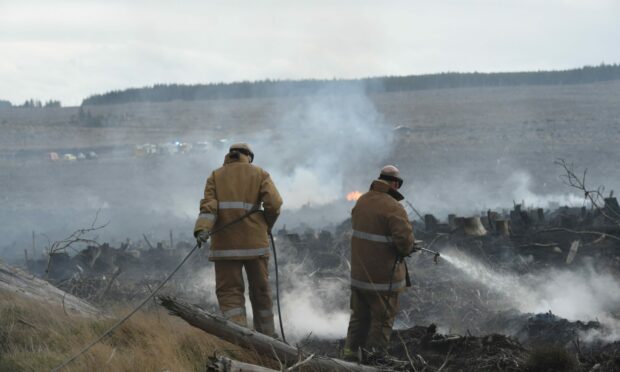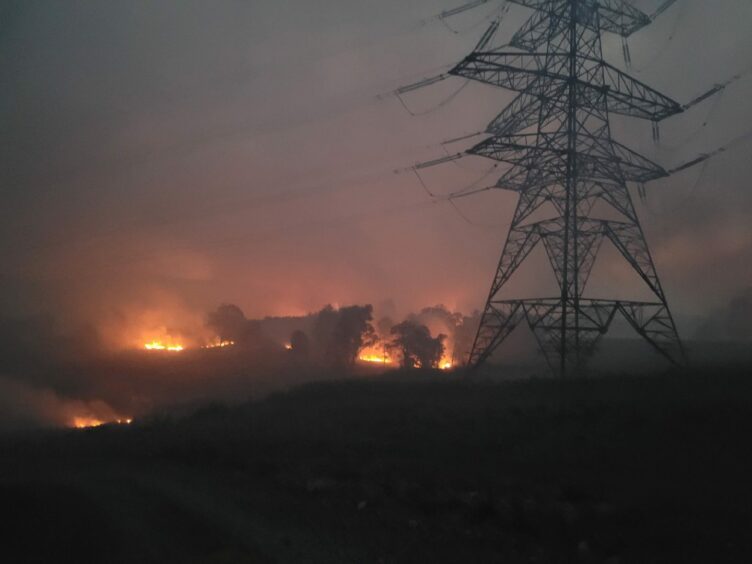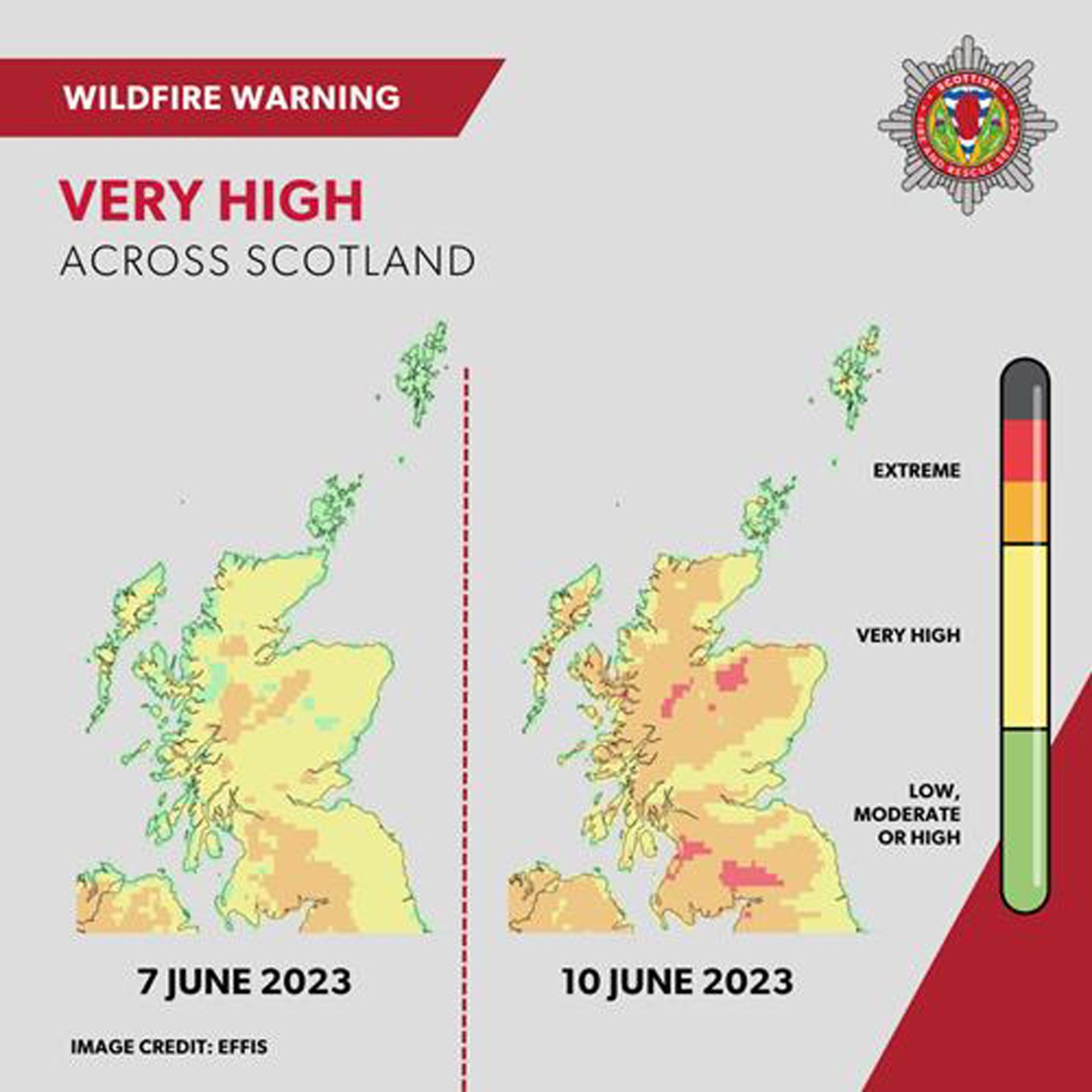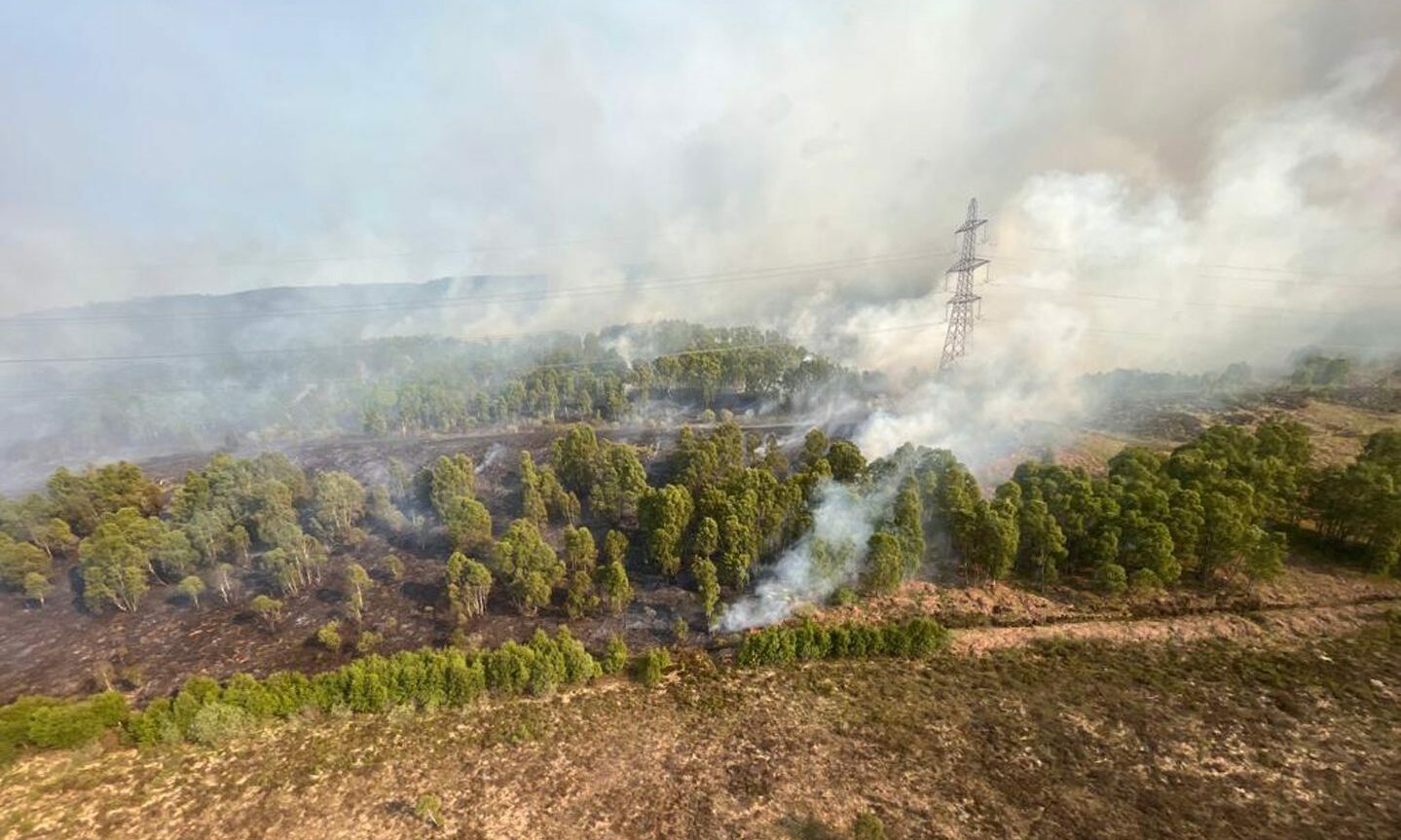Fire chiefs are calling on people to exercise common sense this weekend as wildfire warnings across northern Scotland are upgraded to “extreme.”
Crews from across the Highlands have been working around the clock to extinguish wildfires in rural areas during the recent spell of warm weather.
Efforts to contain a wildfire in Cannich, north-west of Inverness, are continuing – 12 days after crews were first called to the blaze.
With forecasters predicting more sunny spells in the days ahead, fire chiefs have extended a nationwide “very high” alert warning across the Highlands, Moray and Aberdeenshire.
Temperatures are expected to reach highs of 20C this weekend.
‘We need people to think twice’
On Friday’s BBC Good Morning Scotland (GMS), Lynne Gow, wildfire tactical adviser for the Scottish fire and rescue service spoke of how the latest band of weather conditions has presented challenges when attempting to contain wildfires.
She’s calling on people to take extra care to avoid further devastation.
She said: “Right now, we are seeing a lot of dead grass and dead heather. This historically has been around the springtime. We are moving into summer with these conditions persisting, so year-on-year, we notice that the conditions remain in this brittle state for much longer.
“The dead fuels will be reacting to a combination of things, including, lack of rain, significantly warmer air temperatures and sunshine, especially on southern slopes.
“The change in weather conditions does influence how long it takes for wildfires to be put out because conditions are so dry.”
She added: “Fires often start near populated areas. It’s generally the result of human behaviour so it’s either through anti-social behaviour means or carelessness, whether or not it’s intentional.
“When discarding cigarettes or lighting campfires, igniting disposables close to dry vegetation or leaving fires unattended, that’s the kind of stuff we need people to think twice about; lighting fires in areas of the outdoors that are not designed to do so.
“These warnings are quite well advertised by the service, on the website and through social media so we just hope people will take them seriously.”
Where are the wildfire warnings?
The fire service has upgraded the wildfire warning to “red extreme” for some parts of the Highlands, specifically the areas south of Nairn and surrounding Loch Ness.
Meanwhile, an “amber extreme” warning has been issued for the rest of the Highlands, all of Moray and inland Aberdeenshire.
Only the East Coast, Caithness and the Western Isles are in the lower “very high” warning zone while the risk in Orkney and Shetland is “low, moderate or high”.
The current warnings are due to remain in place until Saturday.
Meanwhile, 30 firefighters continue to tackle the blaze at Cannich, which covers an area of about six square miles.
Carelessness can lead to wildfire disaster
Fire crews have urged members of the public to take care while enjoying the outdoors at the weekend.
With temperatures due to top 20C across much of the north and north-east, the smallest spark can lead to an emergency.
It is believed the Cannich wildfire may have been started by wild camping.
Last night, an issue with forestry machinery near Loch Lochy spread to the surrounding area with worries it could have gone further.
Station commander John Harvey said: “We know that many people will be hoping to enjoy the outdoors when the weather is good, but we urge everyone to make sure that they don’t increase the chance of wildfire.
“That means being aware of the risks and following the Scottish Outdoor Access Code.
“Wild and grass fires can start by the careless disposal of cigarettes and barbecues or campfires left unattended.
“They then have the potential to burn for days and devastate vast areas of land, wildlife and threaten the welfare of nearby communities.”
“During this time of the year, many firefighters across Scotland are preparing to actively tackle wildfires as they work to protect our communities.”




Conversation